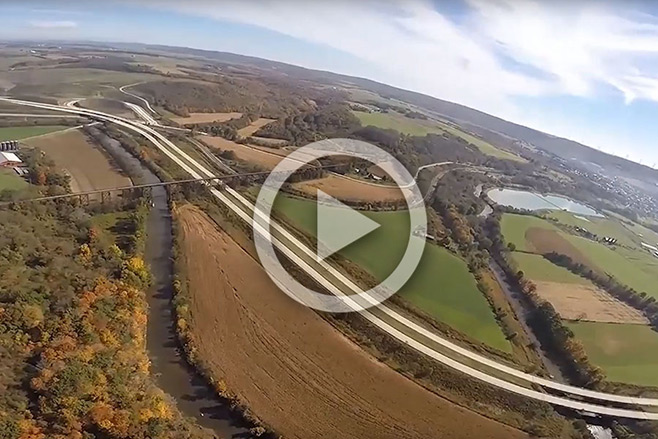August 10, 2017
Innovation of the Month:
Integrating NEPA and Permitting
Integrating National Environmental Policy Act (NEPA) and permitting allows the various environmental reviews and permitting procedures required for Federal-Aid Highway Program projects to be performed at the same time rather than sequentially.
The resulting synchronization can help transportation agencies shorten project delivery time, increase efficiency, save resources, and produce better environmental outcomes:
- Integrating NEPA and permitting processes reduces the time and complexity of project development while ensuring projects receive appropriate coordinated review.
- Synchronization improves the efficiency and effectiveness of the project development, mitigation, and decision-making process.
- A synchronized review process reduces duplicative efforts, leading to time and cost savings.
Integration of NEPA and permitting processes is not just for use on large projects. This flexible, scalable approach can also be applied at the program level, to small projects, or to parts of large projects.
View an Innovation Spotlight video on integrating NEPA and permitting.
Colorado Uses Analysis to Quantify Safety Performance
Before proceeding with a project to remove a 2-mile bottleneck on I-225 by restriping the road, the Colorado Department of Transportation (CDOT) wanted to know how the project would affect the I-225 and downstream I-25 corridors. The Every Day Counts (EDC) data-driven safety analysis (DDSA) team worked with CDOT on a predictive analysis using the Interactive Highway Safety Design Model (IHSDM), software analysis tools that support DDSA, to quantify the potential change in safety performance. For information on using IHSDM for DDSA, contact Jerry Roche of the FHWA Office of Safety or John McFadden of the FHWA Resource Center.
South Carolina Explores Community Connections
The South Carolina Department of Transportation (SCDOT) is pursuing the EDC community connections initiative by considering new ways to accomplish transportation improvements. FHWA staff delivered a workshop on performance-based practical design that challenged participants to think beyond cost-based choices on projects and use performance data to make informed decisions in balance with community needs. The workshop showcased results of implementing practical design to improve safety and operations on Arizona State Route 264, Kansas State Route K-177, and Minnesota Highway 10. Contact Robert Mooney of the FHWA Office of Infrastructure to bring a workshop to your State.
Road Diets Increase Business in Retail Shops
Business owners cite road diets as a reason for increased business in their retail shops, according to a New Jersey video that highlights the effect of roadway reconfiguration on commercial growth. The video is one of the technical assistance materials FHWA provided to Bike Walk RVA, a Virginia program that supports bike- and pedestrian-friendly infrastructure, to introduce potential road diet projects to Richmond residents and business owners. Other resources on how road diets can improve an area’s economic vitality and livability include Road Diet Economic Impacts, Debunking Road Diet Myths, and Road Diet Case Studies. For technical assistance on bringing road diets to your area, contact Becky Crowe of the FHWA Office of Safety.



